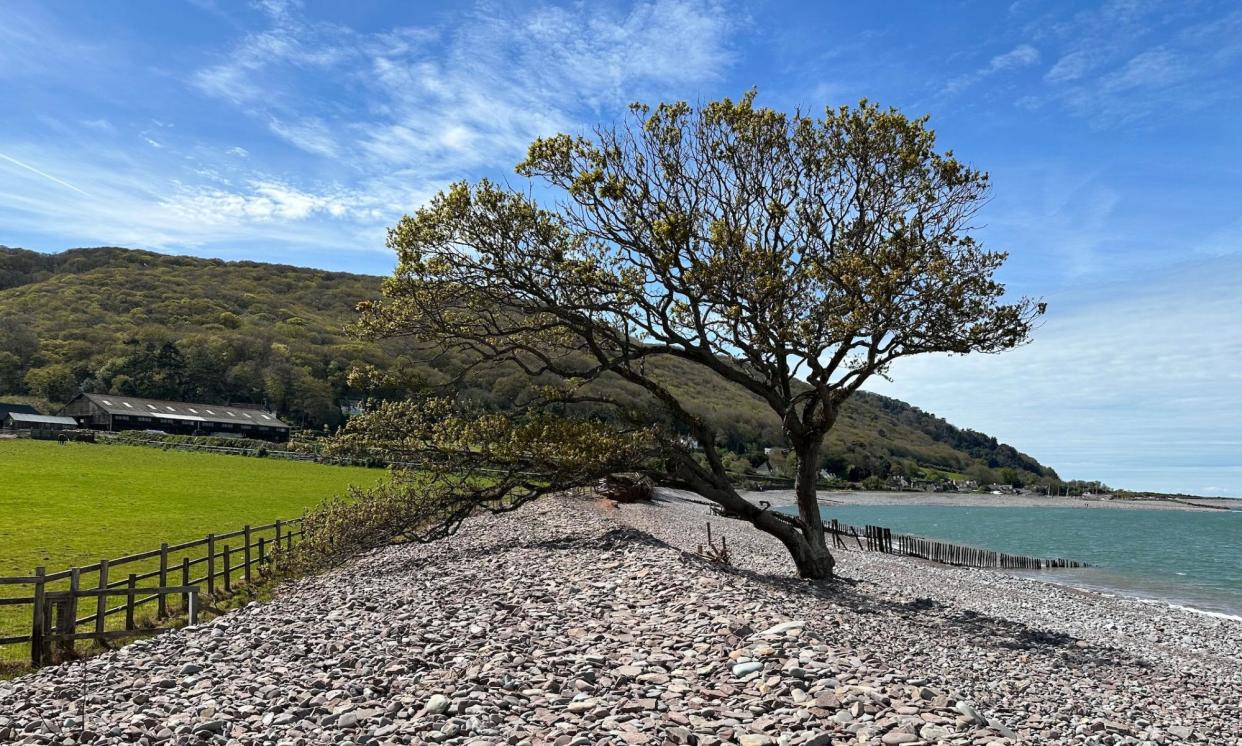Country diary: The beach tree yearns to be back on land

Sessile oaks are emblematic of the south-west, where they grow mossed and twisted in the region’s acidic soil and plenteous rain. Their Latin name, Quercus petraea, means “oak of rocky places” and they thrive in the shallow clitter of Exmoor’s steep, misty hillsides.
Sessile means immovably fixed in position, and refers to the way the acorns grow attached directly to the twigs. This differs from pedunculate oaks (Quercus robur), which dangle their acorns on pendular stems.
There’s a sessile oak at Porlock Weir that could claim to be the most fixed and rock-surrounded tree in the whole area. Thirty years ago, it stood in a corner of a horse paddock with grass around its trunk, but today it’s growing on the beach.
The oak hasn’t moved – the coast has retreated, washed away by extreme weather. Storms and high tides have stripped the soil and heaped boulders around its base. Gales batter its salt-cracked bark, grey waves carrying stones the size of cannonballs. Every winter the sea hurls barrowloads of pebbles on the shrinking pasture and bites chunks from the land. Part of the boundary fence now hangs suspended in the air, wooden posts quivering in the wind.
Coastal erosion is usually seen in terms of its dire impact on people – homes toppling, communities abandoned, roads closed. Its effects on other species are less visible. The sea oak is a marker of wider change. Marooned, its branches reach with a long and yearning lean towards the land that has slipped from its clutch and will not return.
When the sun shines, the tree’s shadow just touches the meadow edge, indicating the hidden underground path of its roots. To survive, it must be drawing sustenance from far behind the shore. Who knows how long it will endure; it could last for several more years, or be gone in a few months.
For now, it’s flowering, and shaking golden tassels at the teal‑blue sea. As with all oaks, it has both male and female flowers. The catkin clusters shed pollen while the small, red-tinged female flowers will develop into acorns. Perhaps one or two seeds will make their way back to the woods.
• Country diary is on Twitter at @gdncountrydiary


